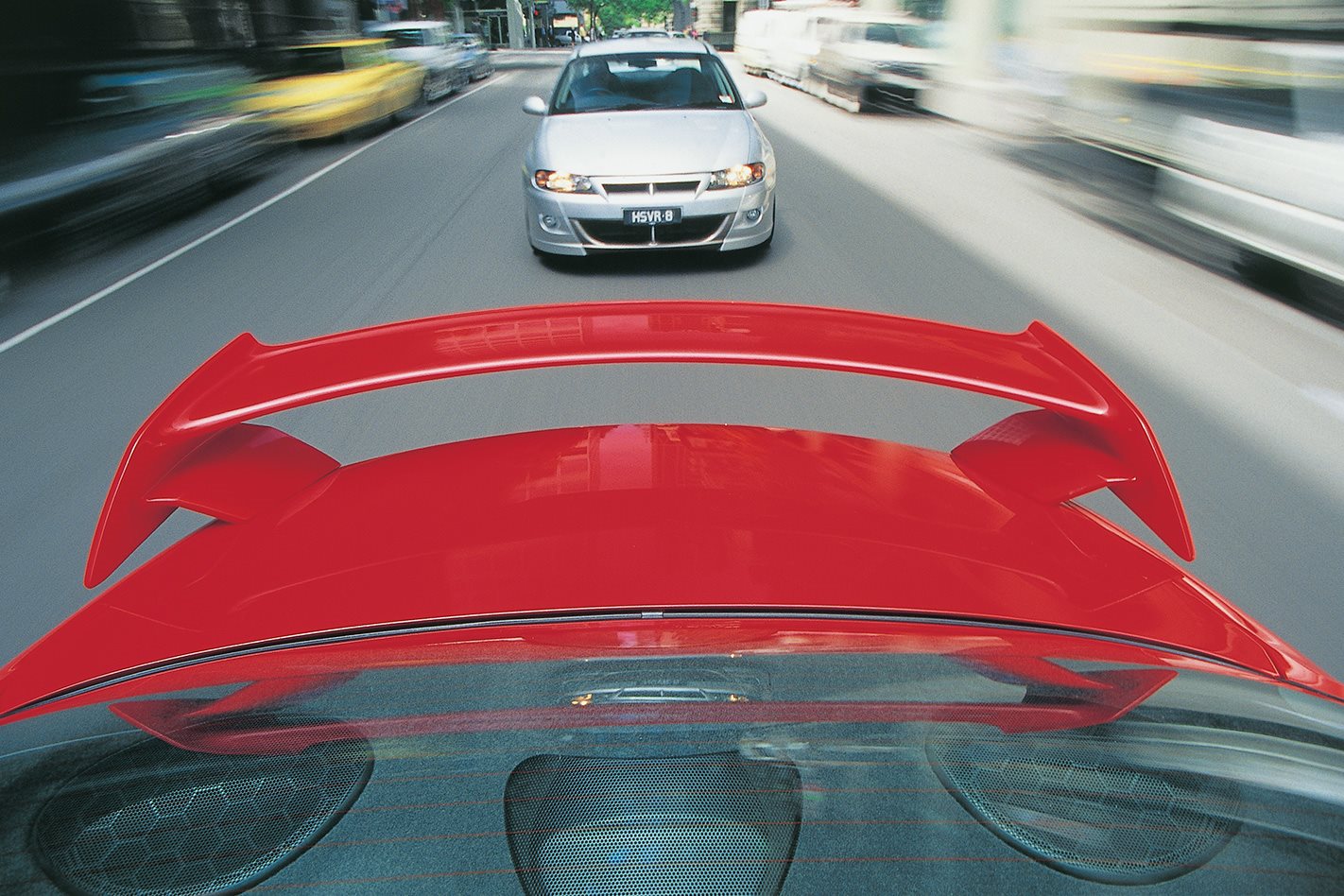It’s been a long, long time since both Ford and Holden (okay, HSV) have concurrently had their mitts on truly big-capacity – as in bigger than 5.0-litre – V8s.
This article was originally published in the February 2002 issue of MOTOR.
In fact, it’d be, oooh, 1974 when Holden dropped the 350 Chev from its GTS Monaro, that both makers last offered bent-eights banging on 6.0-litres. And it’s all because Ford has finally caved in to the marketing temptation of having a V8 with the numbers to wipe that smug smile of HSV’s dial.
At 5.6 litres and 250 kW, the Henry falls 60 cc and 5 kW short of the mainstream HSV version of the Gen III, but when you’re talking digits like those, even a full 5 kW is just a two per cent deficit. Not worth arguing the toss, really. It’s pretty easy to see that Ford is sick and tired of being the dirty rascal while HSV plays king of the castle with the muscle-bound Chev.
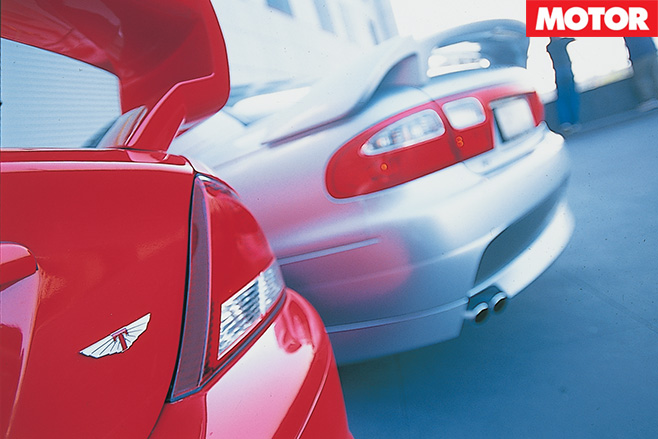
But the HSV Clubsport, with the R8 option of bigger brakes, better seats and more, is never going to be a push-over. And, by-the-by, does a theoretically lazier stroker engine in the Tickford TE50 make for a better sporting experience than the snorting 220 kW version of the same Windsor block? Only one goddamn way to find out: Gentlemen, start your bloody big engines.
Given that each manufacturer has spent so much time and money on their respective engines, it seems only fair that that’s where we should start. Check out the sidebar panel on the back page of this test and you’ll see that, although the Ford is the one being touted as the true stroker engine, the Gen III actually has a smaller bore and a longer stroke. All things being equal, you’d expect the Gen III to make more torque than the Ford (and at lower revs) with its power peak arriving earlier than the Henry’s. Bzzzzzt.
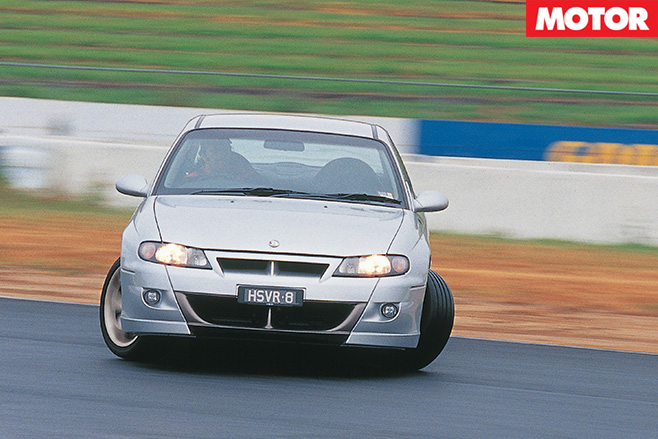
Subjectively, it’s the HSV that feels like it needs the biggest rev to get hauling. Whether it’s intake port shape and size or what, we don’t know, but it doesn’t feel like it’s really trying until you’ve got 2500 rpm showing. Three-thousand is even handier.
It’s way better than the 225 kW Holden-spec version of the same engine, but it’s no low-rev slugger. Once into its stride, however, HSV’s Gen III piles on the urge in a smooth, linear – if a tad noisy – way, and only pulls the pin at 5500 rpm.
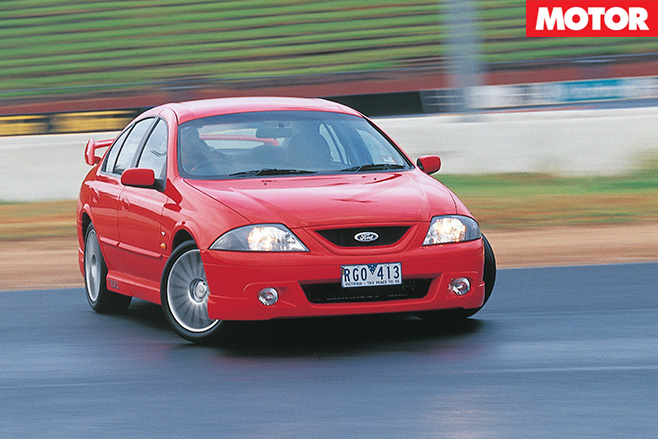
In fact, it feels even more willing to spin its innards than the 220 kW 5.0-litre Tickford mill. There’s (quite) a bit more yammering, vibration and yodelling than the Gen III, but the noise as you pass 4000 rpm has to be heard to be believed. Damn, it’s good.
Against the stopwatch, there’s really bugger-all in it. Of course, given the kerb weights of 1706 kg for the R8 and 1708 kg for the TE50, and the fact that the outright power figures are so close, any real difference comes down to gearing. Even then, because you’ve always got the engines in their blitz zone during a 400 m run, the gearing makes less difference than you might have imagined.
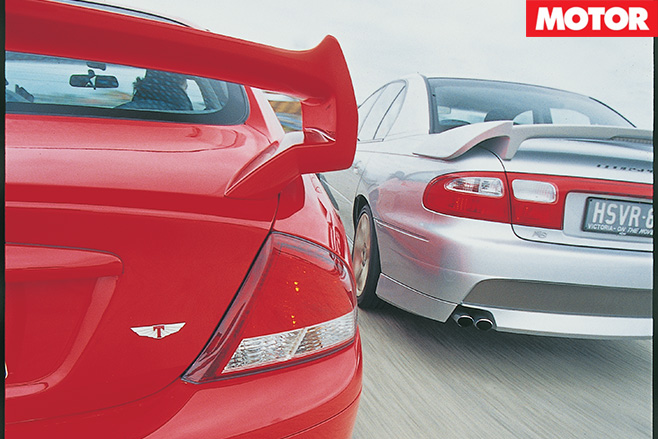
Those gearing differences that meant so little on the track suddenly come into focus in the world of speed restrictions and tight corners. At 100 km/h in fourth, the Henry is pulling just on 2900 rpm and in top at the same speed, the revs fall back to 1750. That’s a big gap, but it doesn’t feel too bad given there’s still plenty of urge available below 2000 rpm.
The six ratios in the HSV’s box allow it a little more scope with 100 km/h in fourth equating to 3100 rpm, 2400 rpm in fifth and a Mars probe-like 1600 rpm in sixth. So you’d expect the HSV to be quicker to accelerate in fifth than the Tickford in the same gear and, although it does, it’s not by much, and neither of them are exactly frying their tyres in the process.
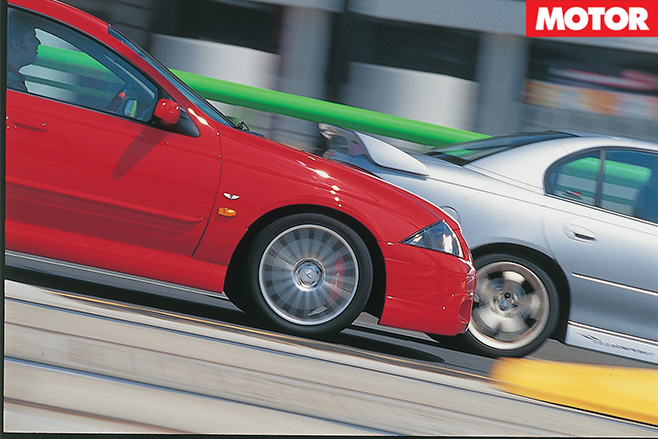
Staying in fifth also meant we could do with one less gearshift; no bad thing given the fact that the shift in the Clubsport is somewhat less than perfect. HSV’s work on the shift in recent times hasn’t turned the six-speed into a slick shifter by any stretch of the imagination.
The main problem is the glacial pace at which the box stirs its cogs about. The Ford’s Tremec five-speed is no great shakes either, but it is a quicker, more positive shift, even if you still need plenty of muscle. Speaking of which, you better have a strong left leg because the clutch in the Tickford is heavy, imprecise and needs to be pushed almost through the firewall if you’re to pick up first without a very loud, ‘I’m-a-gimp’ graunch.
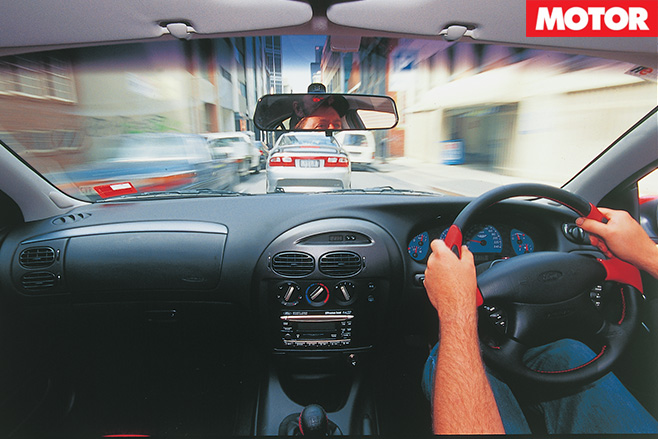
Inherent balance, the Pommy magazines call it. There’s no doubt the HSV is quick up a mountain pass, but unless there’s plenty of friction coefficient for the tyres to get a hold of, there’s simply not as much grip.
The bottom line is that while the HSV is quick point-to-point and reasonably surefooted with it, it’s a car you have to learn to trust, purely because it’s not offering as much in the way of feedback as the Tickford.
That car, meanwhile, is so talkative, it allows you to almost see round corners; to almost pre-empt any little slide from either end of what is a seriously good chassis. And for all that, the Tickford now has less of a trade-off in ride terms for the extra communication involved.
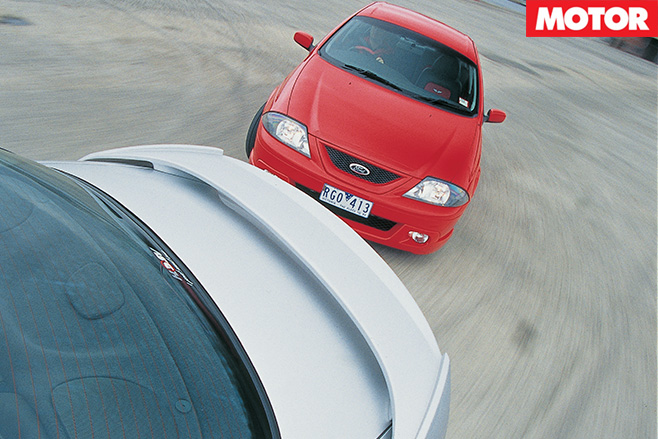
Much of the credit for this transformation is down to the optional (at $1500) Koni dampers which, in our humble opinion, makes them worth every cent. That background type of suspension and wind noise is more noticeable in the HSV, although it pales compared with the exhaust note in the Ford when you’re up it.
Both manufacturers are now deadly serious about brakes these days, and not before time. The R8 has plenty of stop and the classy-looking Brembo four-pot set-up on the Ford is exotic weapons-grade gear.
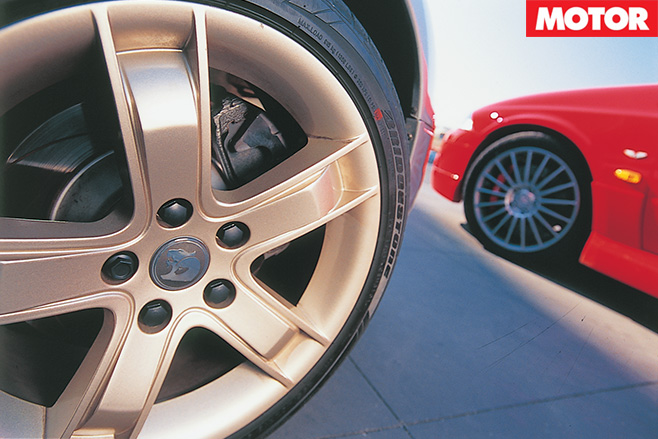
Inside, the Tickford just has too much taxi in evidence to be truly convincing. While the TS50 uses the Fairmont Ghia dashboard, the TE50 gets lumbered with the basic set-up. Curiously, it actually works better than the R8’s layout with better placement of window switches, a gorgeous MOMO tiller and shift-knob, but it just doesn’t work visually. And let’s not forget that the seats that form part of the R8 package (over and above the basic Clubsport) are the mutt’s nuts.
Externally, the Tickford is still hamstrung by the fact that it’s Falcon-based. Apparently, some people actually claim to like the look of the Ford sedan these days, but it’s also true that this is the best incarnation yet. That rear wing is too big to take seriously and the front spoiler is so low it’ll be gone in 60 seconds, but it’s a relatively cohesive effort.
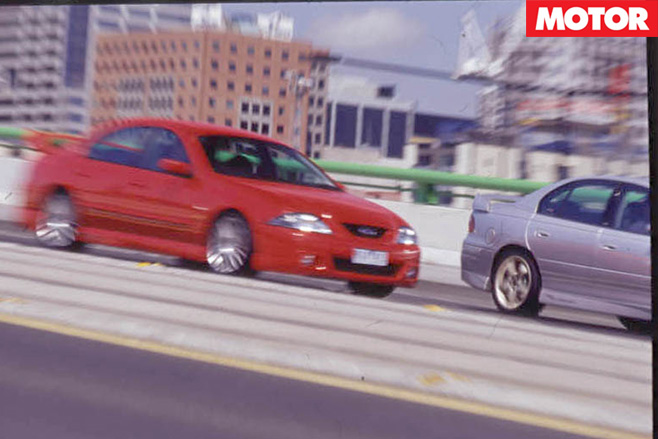
It’s been said before, but it remains that when you take two $35,000 cars, tizzy them up and then try to charge $60,000-plus for them, they’d better be more than just transport. And on that basis, the $64,200 T-Series is a clear winner.
There’s nothing devastatingly wrong with the Clubsport R8 at $66,950, but for anybody who likes to drive fast and have it feel like they’re driving fast, then the Tickford is a sharper tool. It changes direction more quickly, feels more agile and wants to get to know you. And when it matches the previously dominant HSV Clubsport at pretty much everything else, then we’ve got to say it actually moves the game on.

